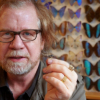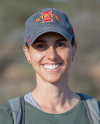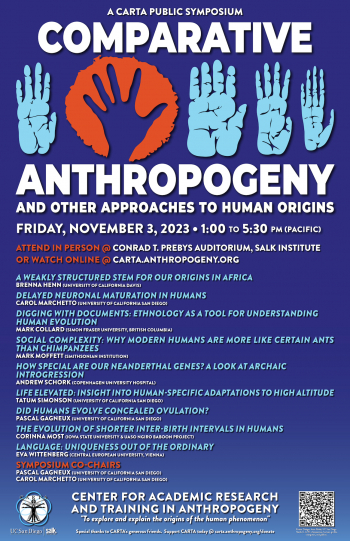Comparative Anthropogeny and Other Approaches to Human Origins
Pascal Gagneux, UC San Diego
Carol Marchetto, University of California San Diego
Summary:
Comparative Anthropogeny (CompAnth) is the study of distinctly human traits and characteristics in the context of comparisons with our closest living relatives, the “great apes.” This symposium, the third of CARTA's CompAnth series, will present a collection of distinctive human traits, ranging from molecular, cellular, and anatomical biology to behavioral, societal, and cultural features. For each feature, available evidence for the evolution of the distinct trait will be discussed, including the timing of its appearance in the evolutionary history of our species, the mechanism(s) responsible for its appearance, its development during the life span, and its ultimate function for human existence and human health.
Whenever possible, the existence of similar traits in animals/organisms outside those belonging to the evolutionary lineage of great apes and humans will be carefully considered. Given the large number of human traits for which no counterparts have yet been described in nature, the limitations of the comparative method will also be addressed and alternative approaches to the singularity that is the human phenomenon will be discussed. The goal is a better understanding of human origins and a full appreciation of our species’ planet altering effects.
 The CompAnth series (see also Oct. 2020 and Oct. 2021 events) gathers dedicated CARTA Members and MOCA-entry editors for discussions regarding humans and our closest evolutionary cousins (chimpanzees, bonobos, gorillas, and orangutans; i.e, "great apes"), with an emphasis on uniquely human features. These insights form the foundation for CARTA's "Matrix of Comparative Anthropogeny" (MOCA) online resource and planned eBook entitled, "Comparative Anthropogeny (CompAnth)."
The CompAnth series (see also Oct. 2020 and Oct. 2021 events) gathers dedicated CARTA Members and MOCA-entry editors for discussions regarding humans and our closest evolutionary cousins (chimpanzees, bonobos, gorillas, and orangutans; i.e, "great apes"), with an emphasis on uniquely human features. These insights form the foundation for CARTA's "Matrix of Comparative Anthropogeny" (MOCA) online resource and planned eBook entitled, "Comparative Anthropogeny (CompAnth)."
Initial funding for the MOCA/CompAnth project was generously provided by late CARTA Major Sponsor Annette Merle-Smith.
Media for each talk can be played by clicking on icons in the table below, or by clicking on the individual talk titles below and then the attachment file at the bottom of the page.
| Speakers | Media | Session |
|---|---|---|
 Gerald Joyce  Pascal Gagneux |
|
Welcome & Opening Remarks Welcome by CARTA Co-Director and Salk Institute President, Gerald Joyce. Opening Remarks by CARTA Executive Co-Director and event co-chair, Pascal Gagneux. |
 Brenna Henn |
|
A weakly structured stem for our origins in Africa Despite broad agreement that Homo sapiens originated in Africa, considerable uncertainty surrounds specific models of divergence and migration across the continent. Progress is hampered by a shortage of fossil and genomic data, as well as variability in previous estimates of divergence times. I will give an overview of popular models for human origins and then discuss how newly sequenced whole genomes from Khoe-San individuals in southern Africa help test different hypotheses. In our research,... read more |
 Carol Marchetto |
|
Delayed neuronal maturation in humans Since the split of Homo sapiens from the last common nonhuman primate (NHP) ancestor, the human brain has substantially altered its size, structure, and connectivity. The human brain has a larger mass with respect to body weight, increased cortical neurons with respect to size, an expanded proliferative zone, and unique connectivity patterns. Human neurons exhibit an exceptionally delayed time course, exhibiting more mature characteristics after a prolonged time compared to other primates, a... read more |
 Mark Collard |
|
Digging with documents: Ethnology as a tool for understanding human evolution Ethnology is the practice of comparing and contrasting the features of multiple ethnohistorically-documented human societies. Also known as ‘cross-cultural analysis’ or ‘comparative anthropology,’ it has a long association with archaeology. For example, the pioneering archaeologist Augustus Pitt Rivers was also an exponent of ethnology. Similarly, the career-capping book of the most influential archaeologist of the second half of the 20th century, Lewis Binford, is a work of ethnology. However... read more |
 Mark Moffett |
|
Social complexity: Why modern humans are more like certain ants than chimpanzees The most complex organizations in the living world beside those of humans are the colonies of ants. I will argue that points of comparison between sharply different organisms like ants and humans are exceptionally valuable to science, and indeed that modern humans are in many ways much more like certain ants than we are to our nearest relatives, the chimpanzees. I consider such issues as the role of individuality and group identity in ant societies; the advantages to ants of flat organizations... read more |
 Andrew Schork |
|
How special are our Neanderthal genes? A look at archaic introgression. The human genome contains segments of DNA with non-human origins. This introgressed genetic material is remnants of mating events between early modern humans and their archaic contemporaries (e.g., Neanderthals and Denisovans). In this talk, I will review the evidence for such genetic material, its consequences on phenotypic diversity in modern humans, and discuss if this process - archaic introgression - is typical among other great ape species. |
 Tatum Simonson |
|
Life elevated: Insight into human-specific adaptations to high altitude High-altitude adaptation stands out as one of the most notable examples of evolution within our species. Despite similar challenges of decreased oxygen availability, human groups on different continents have followed unique evolutionary trajectories. I will discuss how genomic, molecular, and physiological discoveries reveal key insights into human-specific evolutionary changes, examine comparative findings and limitations, and consider alternative approaches for understanding distinct facets... read more |
 Pascal Gagneux |
|
Did humans evolve concealed ovulation? Humans do not exhibit visible manifestations of ovulation. In contrast, chimpanzee and bonobo females exhibit conspicuous swellings of their genital area during their fertile (periovulatory) period. This observation has led to the notion of “concealed ovulation” and it has been argued that this represents a distinctly human adaptation. Adaptationist scenarios proposed include promotion of paternal investment, confusing paternity to reduce the risk of infanticide, facilitating clandestine mating... read more |
 Corinna Most |
|
The evolution of shorter inter-birth intervals in humans Life history theory predicts that inter-birth intervals (IBIs) will depend on a trade-off between maternal investment in current and future offspring/reproduction, mediated by somatic maintenance of the mother. IBIs are therefore influenced by the amount of energy available to the mother and the infant. Usually, IBI scales with the body size of the mother and the infant, with a larger relative body size of infant to mother correlating to slower breeding. Human IBIs, however, are much shorter... read more |
 Eva Wittenberg |
|
Language: uniqueness out of the ordinary Human language is a strong contender for the title of most often named species-specific feature in the literature. But why is that? In this talk, I explore what we could mean by "human language", and how different conceptions of language inevitably lead to different answers about whether it is species-specific. While syntax is a central feature, it is only one of several, and the uniqueness of human language is that it arose from a combination of, perhaps, ordinary ingredients. |
 Carol Marchetto  All Speakers  Gerald Joyce |
|
Question & Answer Session and Closing Remarks Wrap-up by CARTA internal advisor and event co-chair, Carol Marchetto. Q&A with all speakers. Closing Remarks by CARTA Co-Director and Salk Institute President, Gerald Joyce. |
| Attachment | Size |
|---|---|
| 1.36 MB | |
| 1.01 MB |
If you enjoy this event, please consider supporting CARTA's quest to explore and explain the human phenomenon.


